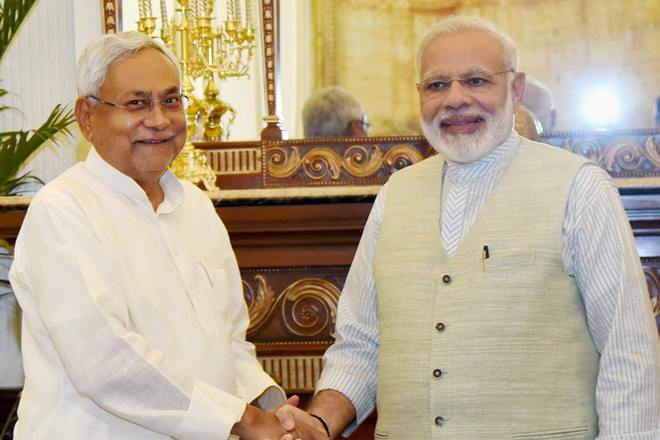Back in the month of April, 2017, PM Modi called for carrying forward the debate and discussions on holding simultaneous elections to Parliament and state legislatures. PM Modi was addressing the Niti Aayog Governing Council’s third meeting, which was attended by several state chief ministers. In the month of October 2017, The Election Commission echoed the Prime Minister’s sentiments. The Election Commission stated that it will be fully equipped to conduct simultaneous elections to the Lok Sabha and State Assemblies by September 2018. Now, Bihar Chief Minister Nitish Kumar has come out in support of PM Modi as well. Bihar Chief Minister Nitish Kumar on Monday supported PM Modi over simultaneous Lok Sabha and Assembly elections. Nitish Kumar said that he was completely in favour of holding simultaneous elections of every legislative unit, right from the Lok Sabha to local bodies, having a fixed term of five years but it required few amendments.
In his words – “Till 1967, Assembly elections were held with Lok Sabha polls, but political instability prevented that in later years. I principally agree with the Prime Minister’s point of view on this issue and if there is a consensus that the same can be implemented from 2024,” he said.
Bihar Chief Minister was also critical of the Code of Conduct imposed by the Election Commission before every election, which, he said, affects governance and development projects.
This comes as a shot in the arm for the Modi Government which has been fighting hard to make simultaneous elections a reality. Congress and most Opposition parties have been dead against the move.
What is a Simultaneous Election?
Simultaneous elections would, to explain briefly, mean that you will go to your respective voting centre in the constituency and cast two separate votes, one for the Central government, in the form of voting for an MP candidate from your constituency, and one for the MLA, to represent your constituency in the state assembly.
A very important point to note is that, you will NOT vote for both the Central and State governments together. For example, in the state assembly, if you vote for a BJP MLA candidate, it does not imply that you will vote for the BJP at the Centre too, or vice versa. Such facetious rumours are being spread by some of the regional as well as national parties, for obvious political reasons, who are extremely scared that if, elections are conducted next year, the mandate will go against them. For example, if you are from Meghalaya, you can vote for the UDP-HSPDP alliance (reginal alliance of the state) and vote for the BJP at the centre. Just that, instead of one vote, two votes will be casted on the same day on two different EVM’s.
If implemented, the benefits of simultaneous elections would be almost immediately visible:
1.) Massive reduction in election expenditures
2.) Administrative machinery will not be burdened with conducting elections 3-4 times a year
3.) Governments won’t always be under electoral obligations and can focus on better governance
4.) Each government will get a good four-year solid term in office, assuming one year will be consumed in campaigning
5.) The moral code of conduct that restricts a lot of economic activity, will not be applicable for at least 4 years to a government/party
6.) people of the country won’t remain in continuous election mode
7.) Central and State governments will be more coordinated
